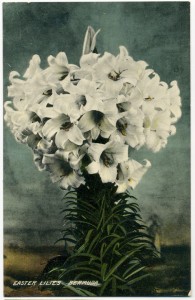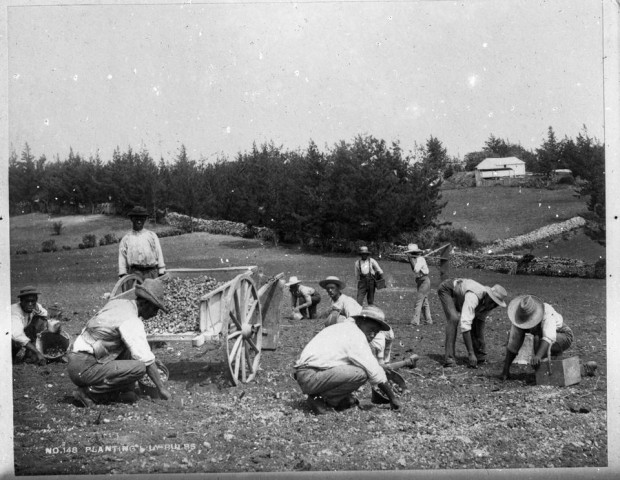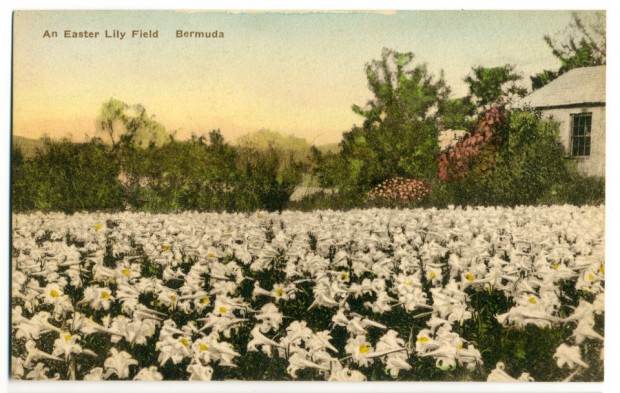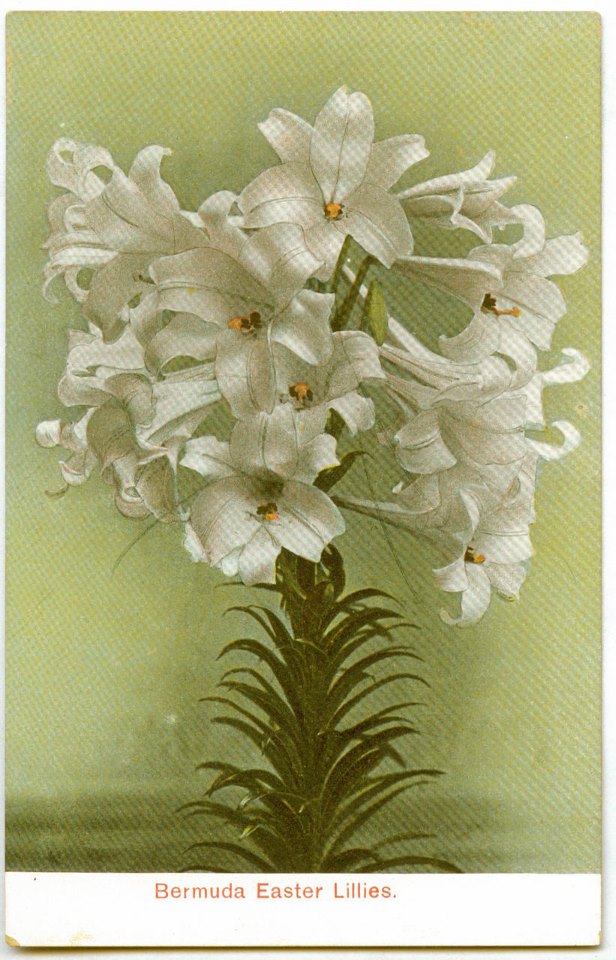National Museum Posts Historic Lily Photos
 The National Museum of Bermuda posted a set of vintage photos on its Facebook page today [Mar. 27] which harken back to the era when Bermuda was known as “The Easter Lily Island.”
The National Museum of Bermuda posted a set of vintage photos on its Facebook page today [Mar. 27] which harken back to the era when Bermuda was known as “The Easter Lily Island.”
As late as the 1890s, Bermuda controlled fully 90 percent of the lily market in the United States.
Although Bermuda totals under 15,000 acres — and only 4,000 acres were under cultivation at the time — the island turned itself into a thriving winter garden for the US East Coast in the days before refrigerated box cars allowed for the easy transportation of fresh crops from the American South and West by rail.
In the late 19th and early 20th centuries Bermuda exported onions, potatoes and Easter lilies — 90 percent of its crops were sent by ship to New York for distribution up and down the East Coast.
And both cut flowers and lily bulbs were by far Bermuda’s most lucrative cash crops.
Easter lilies — now also known as Bermuda lilies– were introduced to the island from Japan in the mid-19th century.
The large, white trumpet-shaped flowers had become a symbol of purity, hope, innocence and peace in the Christian tradition.
Aside from Christ’s parable about the lilies of the field, it is said white lilies sprang up in the Garden of Gethsemane where Jesus wept in the last hours before he was betrayed by Judas.
Another legend claims that the white lilies grew from the repentant tears shed by Eve upon her departure from Eden.
Commercial production of the bulb began in Bermuda in the mid-1800s. Within a few decades Bermuda was routinely being referred to as “The Easter Lily Island” – or simply ”The Easter Isle” – in American and Canadian newspaper reports on what had become one of its largest industries.
“How many lilies are grown in the Bermudas is a difficult question to answer,” said a Baltimore paper in 1896. “The figures run way into the tens of millions. They grow like weeds, and if it were merely a question of producing lilies the Bermudas could easily flood the world with them from one year’s end to the other.
“But the Bermuda lily farmers handle their crops with one purpose in view, and that is to make the beautiful plant bloom at Easter time. This at first was a difficult matter, but it is now accomplished with an almost clock-work precision.”
An acre of land was said to be capable of producing 40,000 marketable bulbs — although it took as long as four years to produce larger bulbs of nine-to-14 inches in diameter from which sprang the tallest lily stalks crowned with multiple blossoms.
The National Museum of Bermuda is open on Good Friday and Easter Sunday and is encouraging residents and visitors to make a trip to Dockyard over the long weekend.
- Photos courtesy of the National Museum of Bermuda
Read More About
Category: All, Environment, History





